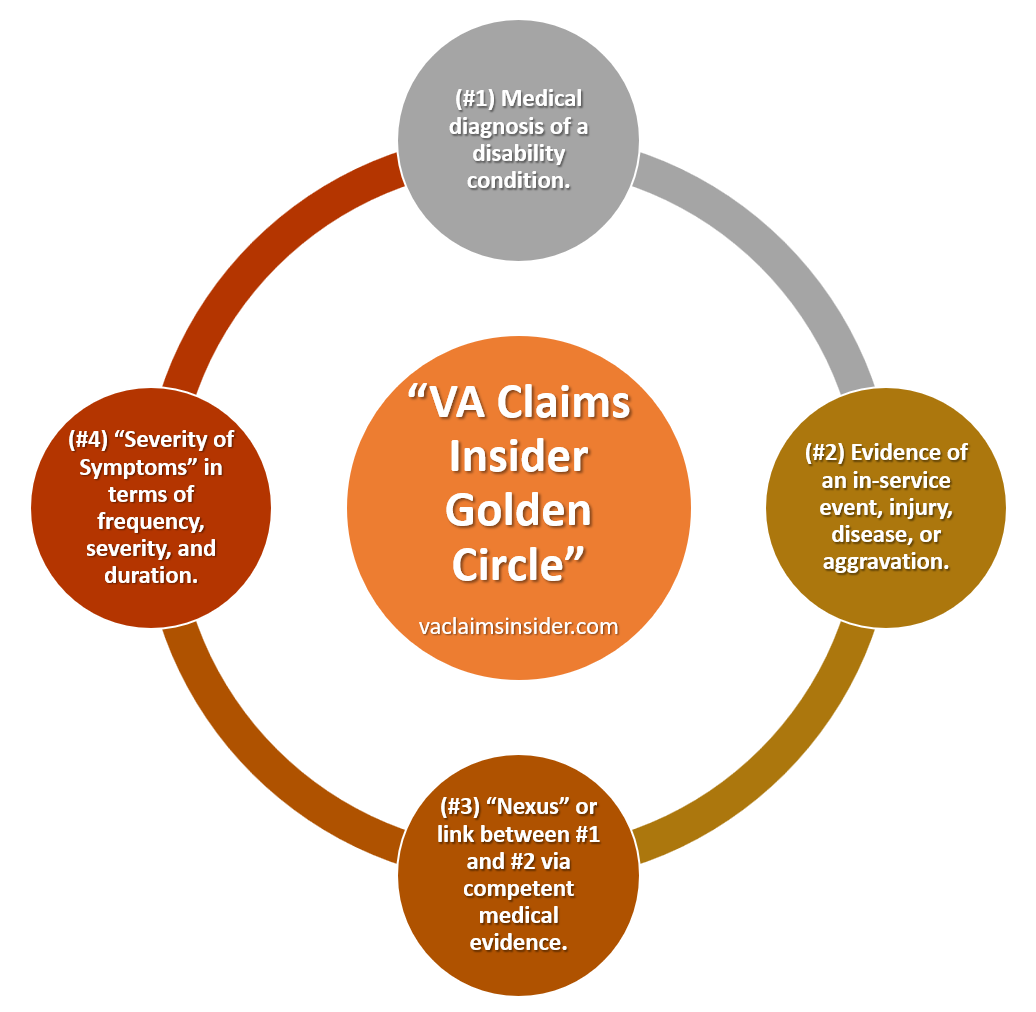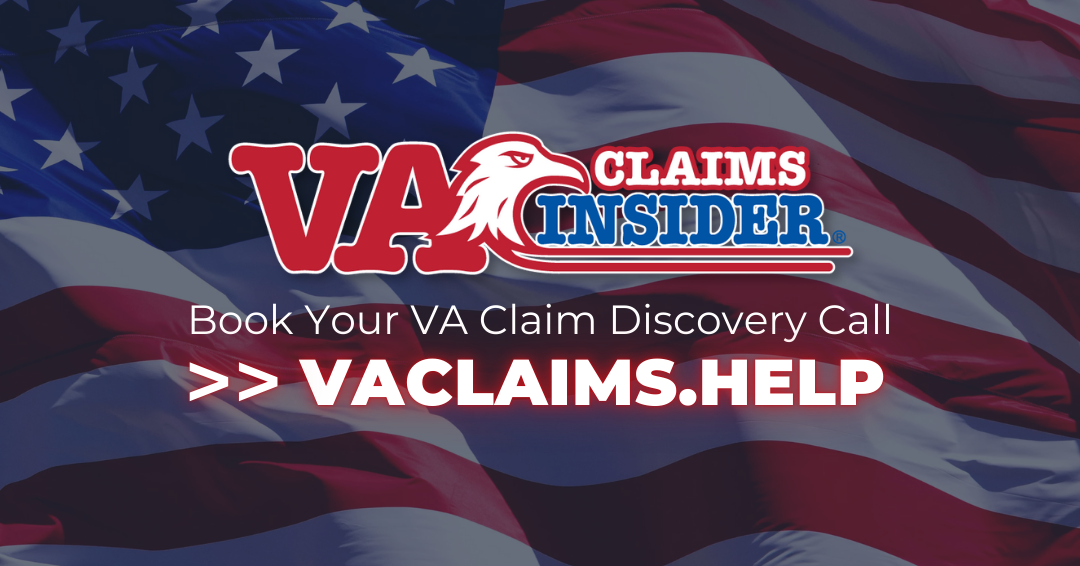Looking for Expert-Level VA Claim Answers?📱Call Us Now! 737-295-2226
Filing a VA disability claim can feel like stepping into a maze with no clear way out.
Let’s face it: The VA claims process is daunting, confusing, and frustrating—especially if you try to tackle it on your own.
Even when you do everything right, your VA claim can still get denied because of an oversight or simple VA error.
Many veterans don’t realize that the Veterans Benefits Administration (VBA) is loaded with undertrained and inexperienced VA claims adjudicators, which leaves plenty of room for mistakes and errors.
On top of that, you’re navigating a broken VA disability system bogged down by red tape and the bureaucratic machine that is the Department of Veterans Affairs (VA).
Having helped over 25,000 veterans secure their VA disability benefits faster, I’ve seen the biggest mistakes veterans tend to make, and believe me, they can make all the difference between success and failure.
In this high-value blog post, Brian Reese the VA Claims Insider reveals and explains the top 3 pitfalls veterans make when filing VA disability claims, explain why they’re problematic, and most importantly—show you how to avoid them.
Let’s begin!
Table of Contents
4-Minute Video: How to Get Approved for VA Disability FASTER (Avoid These 3 Common Pitfalls!!!)
You Might Also Like the Following Articles
Summary of Key Points
- The Complexity of Filing a VA Claim: Navigating the VA disability claims process can be overwhelming, especially when veterans go it alone. The system itself is complex and riddled with bureaucratic obstacles, compounded by the inexperience of many VA claims adjudicators. These factors can lead to mistakes and oversights that could delay or deny claims even when everything seems to be done right.
- The Golden Circle for VA Claims Success: The “VA Claims Insider Golden Circle” outlines four essential elements for a successful VA claim: 1) a diagnosis of a current disability, 2) evidence of an in-service event or injury, 3) a nexus (or connection) linking the two, and 4) detailed documentation of the severity of symptoms, including impacts on daily life and work. These components align with The Caluza Triangle.
- The SEM Method Framework: At VA Claims Insider, the Strategy + Education + Medical Evidence (SEM) Framework is foundational to VA claim success. Veterans need a solid strategy, essential education of the VA claims process, and strong medical evidence to increase their chances of receiving the rating and compensation they deserve. The framework emphasizes that personalized guidance from an expert can be instrumental in navigating these steps efficiently.
- Top Three Pitfalls to Avoid: Many veterans make critical mistakes, such as filing without a personalized VA claim strategy, not being educated about the VA claim process, and lacking sufficient medical evidence. Addressing these pitfalls involves having a focused claim strategy (limiting conditions per claim), educating oneself on the VA process (particularly for C&P exams and 38 CFR, Part 4 the Schedule for Rating Disabilities), and gathering robust medical evidence, including Nexus Letters and DBQs (if needed).
How to Get Approved for VA Disability: Apply the VA Claims Insider Golden Circle to Your Situation

Let’s begin with the basic criteria needed to get your VA claim approved.
Here’s the required elements for all VA disability compensation claims, assuming a veteran is eligible for benefits under the law.
We call it “The VA Claims Insider Golden Circle” and it has 4-parts.
- #1. Diagnosis of a current disability in a medical record. If yes, go to step #2. This must be in a medical record.
- #2. Evidence of an in-service event, injury, disease, or aggravation. If yes, go to step #3.
- #3. “Nexus” meaning link or connection between #1 and #2 above via competent medical evidence. If yes, go to step #4. A strong Nexus Letter from a private healthcare provider can really help you prove your nexus!
- #4. “Severity of symptoms” in terms of frequency (how often), severity (how bad), and duration (how long) as well as how these symptoms negatively impact your work, life, and social functioning. This is the final step in The Caluza Triangle and it’s what determines your final VA rating percentage.
Brian Reese’s SEM Method Framework for VA Claim Success
At VA Claims Insider, we follow a proven formula to help veterans succeed in the VA disability claim process.
It’s called the SEM Method Framework:
Strategy + Education + Medical Evidence = The VA Rating You Deserve (Faster!)
This approach combines (#1) a personalized VA claim strategy, (#2) essential VA disability education, and (#3) the right medical evidence to give you the best chance of achieving the VA rating and compensation you’ve earned for serving our country.
Working one-on-one with a VA claim expert can make a world of difference, guiding you through each step of the process so you’re set up for success.
Now, let’s dig into the top three mistakes veterans make when filing VA claims and how to avoid them!
Pitfall #1: Not Having a VA Disability Claim Strategy
If you don’t have a solid VA claim strategy in place, even the best tactics won’t make a difference—you’re setting yourself up for failure.
Creating a personalized VA disability claim strategy, crafted for your unique circumstances, is mission-critical.
It’s the key to securing the VA rating and compensation you deserve, faster and with fewer hurdles along the way.
Here’s how to begin building your VA claim strategy:
#1. STRATEGY:
- 1–3 disability conditions per 1 claim only. Think Simple, Simple, Simple, and LESS is MORE! More is not more. The more disability conditions you file for the longer it will take for the VA rater to review and rate your claim. And the VA claims backlog is bad right now. There are nearly 1M pending claims and 233K claims in backlog right now! A very focused strategy helps you skip to the front of the line and get a more accurate VA rating decision, faster. You can always open a new claim later and add more conditions. Remember, the VA claim process is never over unless you quit! The only time I recommend filing for all your conditions is if you’re a first-time filer of a pre-discharge claim under the VA’s Benefits Delivery at Discharge (BDD) program.
- Fully Developed Claims (FDCs) only. Standard Claims take longer. You can file your own FDC online at VA.gov in a few simple steps. It’s like “turbo-tax” for VA claims. Make sure you upload digital copies of all your medical records before you submit your claim! You can also include personal statements, buddy letters, medical research reports, etc. Lay evidence matters for your VA claim, especially if there are gaps in your records.
- High-Value VA Claims only! Remember, you’re fighting against the VA’s fuzzy math equation. If you’re trying to increase your VA rating, you want to focus your VA claim strategy on high value claims only. This will give you the best chance of getting a combined VA rating increase, which means more tax-free compensation and benefits for you and your family, for life!
- Focus on mental health claims, simple increase claims, and/or secondary claims only. This is where your personalized VA claim strategy is so important. I recommend you work with a VA claim expert to help lead you to VA claim victory. One small tweak to your VA claim strategy can make all the difference in the world!
Pitfall #2: Not Being Educated About the VA Disability System
I’m often disheartened by how many veterans know so little about the VA disability compensation system.
But here’s the truth: it’s not your fault!
We’re simply not informed about VA disability before we leave the military, and there’s certainly no education provided on the process.
Knowledge can only become powerful when it’s put into action, and that’s my goal for you.
You don’t need to know everything, but getting a handle on the basics and the key elements of the VA disability claim process is essential.
Here’s what I recommend learning before you file your VA claim:
#2. EDUCATION:
- C&P exam education is absolutely mission critical! Would you walk into an important job interview not knowing the questions you might get asked? Of course not! So why would you not prepare for your C&P exam when hundreds of thousands of dollars of tax-free compensation and benefits for you and your family are on the line? It’s the #1 most important day in the VA claim process and you need to be ready to CRUSH it. Know your true story cold. Be uncomfortably vulnerable and tell your truths!
- Review 38 CFR Part 4, the Schedule for Rating Disabilities: This law governs all 800+ eligible VA disability conditions, their rating criteria, and corresponding percentages. Before filing your VA claim, you should have a basic understanding of the severity of your symptoms for each condition and how they negatively impact your work, life, and social functioning.
- Know the VA Disability Cheat Sheet inside and out! You need to know the key elements to win your VA disability claim, including medical diagnosis, nexus for service-connection, and severity of symptoms. Also, make sure you brush up on the 5 types of VA service-connection.
- Get your VA Rating Code Sheet so you know what conditions are “static” and “permanent” and not subject to a VA rating reevaluation or reduction.
Pitfall #3: Not Having the Right Medical Evidence for Your VA Claim
VA claim victory depends on solid medical evidence.
It’s simple: medical evidence is what wins VA claims!
Either you have enough, or you don’t.
From my experience, many veterans lack the necessary medical evidence before filing their VA disability claims.
Here’s what I recommend as you evaluate the medical evidence needed to support your VA claim:
#3. MEDICAL EVIDENCE:
- The #1 reason why VA claims are denied is due to a lack of medical evidence! In my experience, most veterans simply don’t have enough. Want to know how you can get more? From your VA doctor, your private doctor, and from private medical experts who specialize in medical evidence to support a veteran’s VA disability claim. You must have a current diagnosis, a “nexus” for service connection, and evidence of severity of symptoms.
- Mental health evaluation and IMO is preferred (if and only if you have a mental health condition). The most common VA rating for mental health is 70%. It’s a high-value claim that many veterans qualify for.
- Medical evaluations from private providers to include First-Time Medical Diagnosis, Nexus Letters, and/or Disability Benefit Questionnaires (DBQs) for high value claims only! You don’t need a DBQ for every condition and I want to save you some money because DBQs from private providers aren’t free.
Do I Need a Nexus Letter for My VA Disability Claim?
While a Nexus Letter isn’t mandatory, there are specific situations where obtaining one is strongly advised.
Here’s a simple litmus test to decide if you need a Nexus Letter for your VA claim:
- If your disability was diagnosed during service, and it’s in your military medical records (Service Treatment Records), you probably do not need a Nexus Letter. Why? Because you have medical evidence that the disability existed during your military service. It’s good to have a current diagnosis within the past 12-months.
- If your disability was not diagnosed during service or if there are no documented symptoms in your military medical records, you probably do need a Nexus Letter. Why? Because you don’t have medical evidence that the disability existed during service.
- If you’re attempting to service-connect a previously denied VA claim or trying to file for secondary service-connection, a Nexus Letter is highly recommended. Why? Because you need a powerful argument to overcome a previous VA claim denial. In addition, secondary service-connection requires Medical Nexus Evidence that your new disability is “proximately due to” or “aggravated by” a current service-connected disability.
How to Get Nexus Letters for Your VA Disability Claim
Are you looking to obtain a high-quality Nexus Letter to link your condition to your military service or to an existing service-connected disability for secondary service connection?
WE GOT YOUR SIX!
Veterans who become members of the VA Claims Insider Elite program can get access to our preferred provider network who can potentially write VA Nexus Letters at reduced rates.
Why pay $1,500 to $2,000 for a Nexus Letter when you can get one for $595?
Click HERE to speak with an expert now (no-obligation, no high-pressure sales tactics).
Ready to INCREASE Your VA Disability Rating? WE CAN HELP!

- VA Claims Insider is the #1 most trusted name in VA disability claims.
- Work directly with a VA claims coach who can help lead you to VA claim victory.
- 25,000+ disabled veterans served in our membership programs since 2016.
- 30% average rating increase for veterans who complete our #1 rated Elite program.
- 4.7/5.0 average rating out of 5,500+ total reviews; over 4,500 5-star reviews.
About the Author

Brian Reese
Brian Reese is a world-renowned VA disability benefits expert and the #1 bestselling author of VA Claim Secrets and You Deserve It. Motivated by his own frustration with the VA claim process, Brian founded VA Claims Insider to help disabled veterans secure their VA disability compensation faster, regardless of their past struggles with the VA. Since 2013, he has positively impacted the lives of over 10 million military, veterans, and their families.
A former active-duty Air Force officer, Brian has extensive experience leading diverse teams in challenging international environments, including a combat tour in Afghanistan in 2011 supporting Operation ENDURING FREEDOM.
Brian is a Distinguished Graduate of Management from the United States Air Force Academy and earned his MBA from Oklahoma State University’s Spears School of Business, where he was a National Honor Scholar, ranking in the top 1% of his class.



